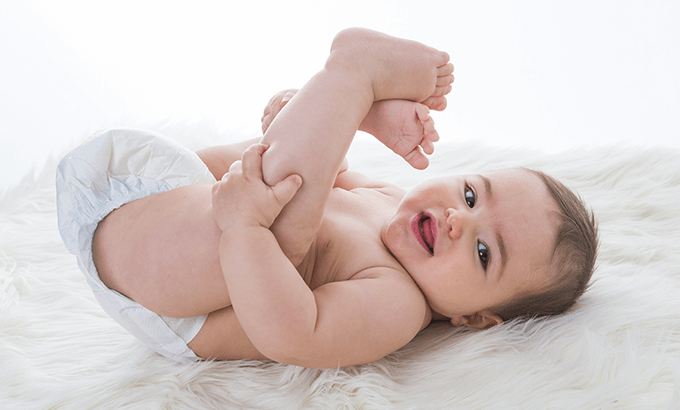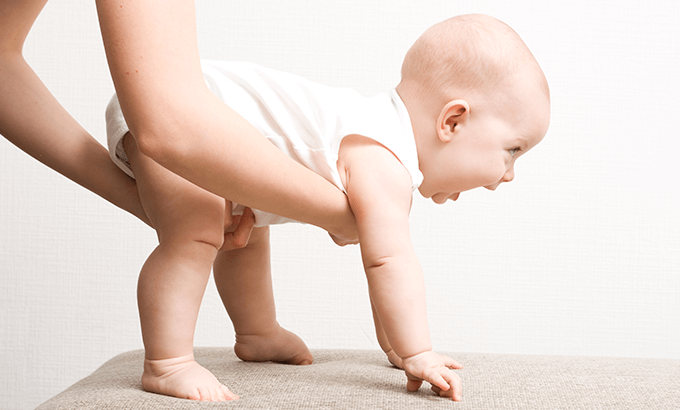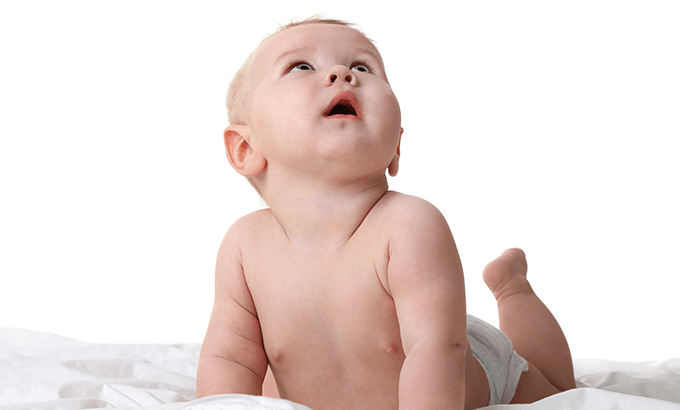Between four and five months, most babies reach their first major milestone: Head control.
By the end of this month, the baby can hold her/his head still while sitting. He/she can also learn to turn his/her head left and right, which allows him/her to track moving objects and detect directions where different sounds are coming from. Once your baby has fully learned to control his/her head, he /she has acquired the skills needed to sit. The time has come for this anyway. As the baby gets older, he/she gets bored of lying on his/her back and face down and wants to spend more time sitting. This month and the next month, your baby will try to sit on his/her own. When lying face down on the floor and playing, lifting the head and chest up to see the toys are useful exercises that help to strengthen the neck muscles and gain head control, enabling the baby to sit up.

Rolling
At this stage, the baby also makes progress in rolling attempts. At the end of this month, he/she can turn to both sides without any help. When babies learn to roll over from front to back and back to front, they can roll over from the supine position you put them in in the middle of the night. If this happens, do not try to turn him/her on her/his back again.
Reaching out and grasping by hand
In the fifth month you may notice that your baby tries to reach for a toy or any object. At first, she/he may just be able to reach the toy, but she/he may not be able to hold it with her/his hand on her/his first try. A 4-month-old baby can move objects by hitting them. But over time, he/she may try to hold on to larger objects by pressing with the palm of his/her hand and curling his/her fingers around the object. When the baby manages to hold a toy, he/she can grab it with both hands and shake it with pleasure. Rocking toys are still a source of fun for him/her and help him/her further improve his/her eye-hand coordination.

Bouncing
A 4-month-old baby enjoys standing upright, standing on your lap and jumping. Your baby’s jumping is part of her/his normal development and does not cause any damage to her/his hips, legs and feet. A 5-month-old baby can put all his/her body weight on his/her legs. She/he still has a long way to go before she/he can stand and walk on her/his own, but it is impossible not to notice that she/he is slowly making progress towards moving more.

Encouraging physical activity
When you take a look at baby stores, you can’t help but be amazed at the variety of items sold for babies; swings, portable playpens, baby seats, stationary activity centres, walkers, baby gymnastics equipment and mother’s laps. The idea of trying to give physical support with tools to babies learning a lot of new skills can be appealing to parents. Most tools for babies are sold to help the baby reach a new milestone, such as sitting and walking. But what is true? What babies need most to develop their motor skills is freedom of movement in a safe environment that allows them to explore their environment and practise their budding skills, with an adult standing by their side and watching them carefully. It is also important for the baby to be in warm contact with the caregiver during playtime.
